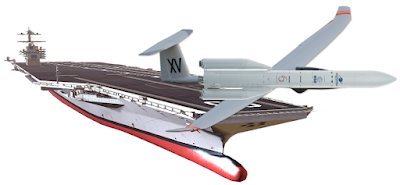Space portals are built close to the shores where the East direction is open sea and the nearby population is low. West Europe is unlucky in that sense. French Guiana is quite far away for logistics. Europe may build sustainable mobile space portals using specially build aircraft carriers. Initially smaller, LEO deploying rockets can be launched from the mobile portal. As the technology matures much bigger versions can be build. This idea requires special rocket and aircraft carrier design.
The rocket would be three staged. The first stage would be a rocket powered plane that would be launched from the carrier. Horizontal take off requires approximately ten percent of the thrust compared to a vertical one like the classical rockets do (Lifting power of air do most of the work). Utilizing multi-wing design increases the lift capability and reduces the runway distance. Coupled with the catapults of the carrier, the rocket can be launched from a special aircraft carrier. The first stage would lift the rocket to 30-40 km altitude and release the second stage there. The second and third stages of the rocket would have classical rocket design. The first stage would than glide back and land on the carrier. The second and third stages would be recovered using The Catcher In The Fly, I had proposed earlier. All the rocket stages will utilize hydrogen as fuel and oxygen as the oxidizer.
The aircraft carrier will also utilize hydrogen as its fuel. Its catapult will work using hydrogen oxygen reaction. The carrier will supply its hydrogen fuel and supplementary oxygen from the offshore wind farms that generate and store hydrogen and oxygen. Floating wind farms can be deployed anywhere because they will only generate and store hydrogen and oxygen. Therefore, they don't need to be connected to land electric grid.
The rocket parts will be transported to the Mobile Space Portal using the first stage, heavy lift plane, of the rocket. The rocket parts transportation, launch facility and the rocket itself will only use hydrogen and oxygen which would be generated from the offshore floating wind farms.
As a result, End-To-End Space Launch process would have much less Carbon footprint.

No comments :
Post a Comment